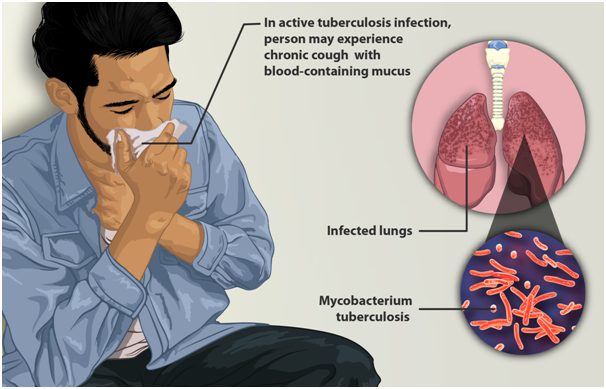Eliminating Tuberculosis
Context:Recently Soumya Swaminathan, former chief scientist at the World Health Organization (WHO) stated that India, considering its accelerated timeline for TB elimination, should take lead in Vaccine development.
What is Tuberculosis
- Tuberculosis (TB) is caused by bacteria Mycobacterium tuberculosis that most often affect the lungs. It is curable and preventable.
- TB is spread from person to person through the air. When people with lung TB cough, spit or sneeze, they spread the TB germs into the air.
- An individual needs to inhale a few of these germs to become infected.
- About a quarter of the world population is estimated to have been infected with TB bacteria, but most people will not go on to develop TB disease and some will clear the infection.
- Those who are infected but not yet ill with the disease cannot transmit
- People infected with TB bacteria have a 5–10% lifetime risk of falling ill with TB.
- Those with compromised immune systems, such as people living with malnutrition or diabetes, HIV or people who use tobacco, have a higher risk of falling ill.
- When a person develops active TB disease, the symptoms (such as coug, night sweats, fever or weight loss) may be mild for many months.
- Without proper treatment, 45% of HIV-negative people with TB on average and nearly all HIV-positive people with TB will die.
Multidrug-resistant tuberculosis (MDR-TB)
- Multidrug-resistant tuberculosis (MDR-TB) is a form of TB caused by bacteria that do not respond to rifampicin and isoniazid, the 2 most effective first-line TB drugs.
- MDR-TB is curable and treatable by using second-line drugs.
- But second-line treatment options are limited and require extensive chemotherapy with medicines that are toxic and expensive.
- Drug resistance emerges when TB medicines are used inappropriately, through incorrect prescription by health care providers, patients stopping treatment prematurely and poor quality drugs.
- Extensively drug-resistant tuberculosis (XDR-TB) is a form of tuberculosis caused by bacteria that are resistant to some of the most efficient anti-TB drugs.
- XDR-TB strains arise after the mismanagement of individuals with multidrug-resistant TB (MDR-TB).
India fight with TB
- India notified more than 4 million TB cases in 2019, it continues to have the largest share of the global TB burden.
- Latest National TB prevalence survey conducted by Indian Council of Medical Research (ICMR) and WHO found prevalence was 300 per 1,00,000, bacteriologically confirmed TB cases
- India’s National TB Elimination Programme is strengthened to meet the goal of ending the TB by 2025 from the country, 5years ahead of the Sustainable Development Goals (SDG) for 2030.
- Interventions through this program include major investment in health care, providing supplemental nutrition credit through the Nikshay Poshan Yojana, organising a national epidemiological survey for tuberculosis, and organising a national campaign to tie together the Indian government and private health infrastructure for the goal of eliminating the disease.
- Nikshay Poshan Yojana 500 rupees per month for tuberculosis patients to buy food.
- The National Strategic Plan for Tuberculosis Elimination 2017-2025 was developed to achieve the goal.
Way Forward
In India, the main risk factor for TB is undernutrition. There is a need for a massive active case finding programme using X-ray. Secondly, India needs to use more molecular tests. On average, in India, only 20% of patients have access to the first molecular test. During COVID-19, India conducted 900 million tests. If we could have scaled up so fast for COVID-19 as there are laboratories everywhere that can do not only PCR but also sequencing, we should use these facilities for TB.
| Practice Question
1. Why does India have the largest share of TB patients? Critically evaluate the government efforts and suggest measures.
|




